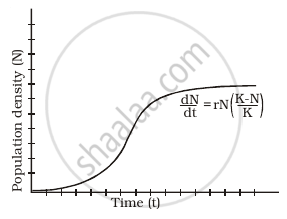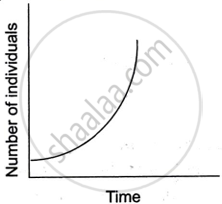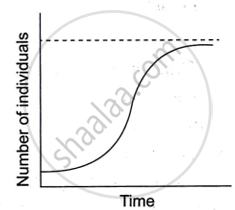Advertisements
Advertisements
प्रश्न
Push factors and pull factors of migration.
उत्तर
| Push factors | Pull factors |
| These factors are the ones which makes a place less attractive for human settlement. | These factors are the ones which makes a place an attractive destination for settlement. |
| These factors forces people to move out - hence face emigration. | These factors force inflow of people - hence face immigration. |
| Examples: Unemployment, poor living conditions, political turmoil, unpleasant climate, natural disasters, epidemics and socio-economic backwardness. | Examples: Better job opportunities, better living conditions, peace and stability, security of life and property and pleasant climate. |
APPEARS IN
संबंधित प्रश्न
List any three important characteristics of a population and explain.
What is ‘carrying capacity’ of a species in a habitat ? Why is logistic growth model considered more realistic?
If the birth rate is greater than the death rate then the population ______.
Give Geographical Reason.
The real progress of a country is understood with the help of the Human Development Index.
Identify the correct correlation :
A: Assertion; R: Reasoning
A: In stage 2, the death rate reduces but the birth rate is constant.
R: The population increases rapidly in stage 2.
Give a geographical reason:
Population may increase though birth rates are low.
Which one of the following is not a push factor?
Birth rate and death rate.
How long did the world take to increase its population from 5 billion to 6 billion?
What is the impact of migration?
What are the components of population change?
What is the trend in growth of population over the years in the world?
Define the term ‘positive growth of population’.
What was the population of India as per the 2011 Census?
What is the average sex ratio In India (2011)?
Which one of the following is not a component of population change?
The ten most populated countries have a ______ world population.
Which of these statements is not true?
Consider the following statements and choose the correct option from the given options:
1. Population grown rapidly during the sixteenth and seventeenth centuries.
2. Expansion of world trade during the sixteenth and seventeenth centuries is an important cause of it.

Which is not in stage III?
The number of mice in a laboratory was 100 on a particular day. After one year their number increased to 120. Calculate the growth rate in the population.
On the basis of the demographic data of a country given below, construct an age pyramid and explain whether the population is stable, declining or growing.
| Age group | No. of individuals |
| Pre-reproductive | 20,000 |
| Reproductive | 15,000 |
| Post-reproductive | 10,000 |
Ratio between mortality and neutrality is called ______.
Which of these is a major cause of female migration in India?
Which of the following forms the component of a nation?
India's population is larger than the total population of which of the following?
In the exponential growth equation Nt = Noert, e represents ______
What would be the per cent growth or birth rate per individual per hour for the same population mentioned in the previous question (Question 10)?
Comment on the growth curve given below.

Swathi was growing a bacterial colony in a culture flask under ideal laboratory conditions where the resources are replenished. Which of the following equations will represent the growth in this case?
(Where population size is N, birth rate is b, death rate is d, unit time period is t, and carrying capacity is K).
When will be the growth of population positive in any place and in which one of the following conditions?
Consider the following and choose the correct answer with the help of given codes-
| STAGES OF POPULATION | GROWTH FEATURES |
| I Period between 1901 to 1921 | 1. Period of steady growth |
| II Period between 1921 to 1951 | 2. Phase of stagnant growth of Population |
| III Period between 1951 to 1981 | 3. High but decreasing growth rate |
| IV After 1981 till present | 4. Period of population explosion |
Assertion (A): Population of a region does not change.
Reasoning (R): Birth rate, death rate and migration affect the population of a region.
Which one of the following is the largest linguistic group of India?
Assertion (A): The population of a region does not change.
Reasoning (R): Birth rate, death rate and migration affect the population of a region.
A: Population of a region does not change.
R: Birth rate, death rate and migration affect the population of a region.
Assertion (A): Population of a region does not change.
Reason (R): Birth rate, death rate and migration affect the population of a region.
A : Population of a region does not change.
R : Birth rate, death rate and migration affect the population of a region.
A: Assertion; R: Reasoning
A: The population of a region does not change.
R: Birth rate, death rate and migration affect the population of a region.
Assertion: Population of a region does not change.
Reason: Birth rate, death rate and migration affect the population of a region.
Study the two figures shown below that represent two growth models.
 |
 |
| Figure A | Figure B |
- Which one of the two figures represents an unlimited supply of nutrients? Give a reason.
- Which figure depicts a challenge to population growth?
- Explain the term reproductive fitness.
- Give the mathematical expressions for Figure A and Figure B.
